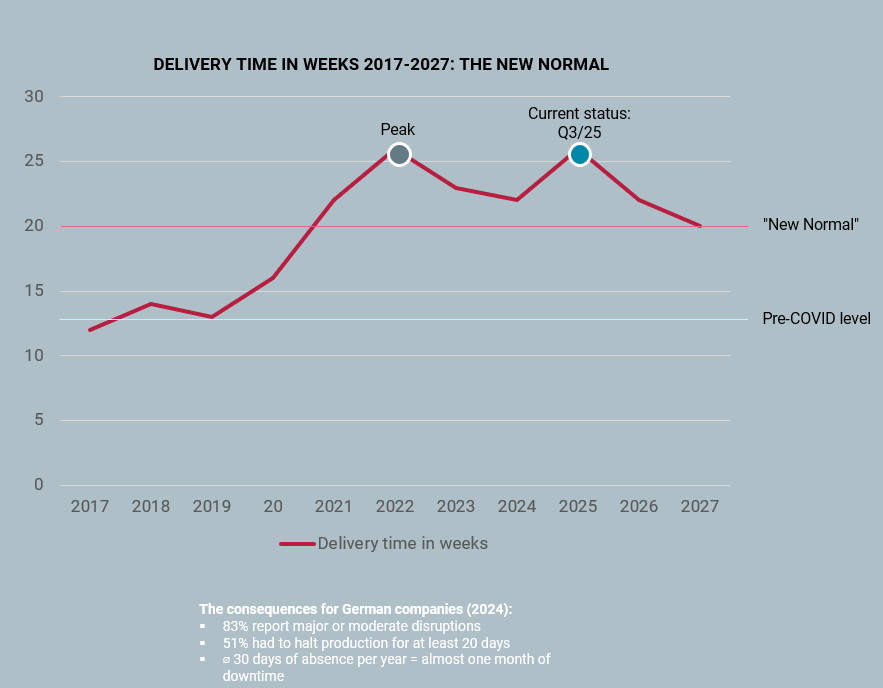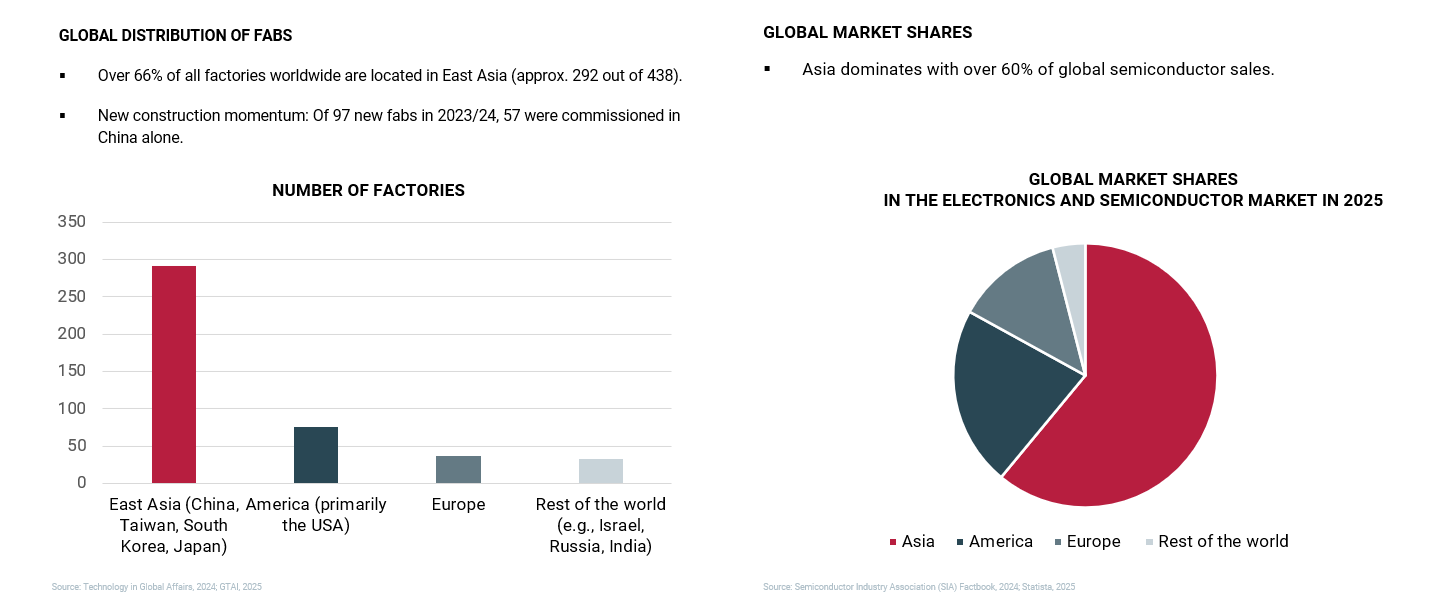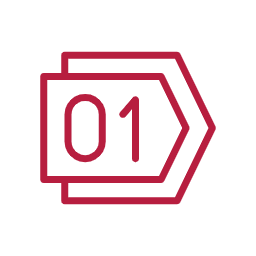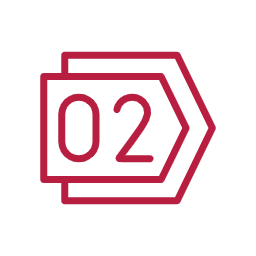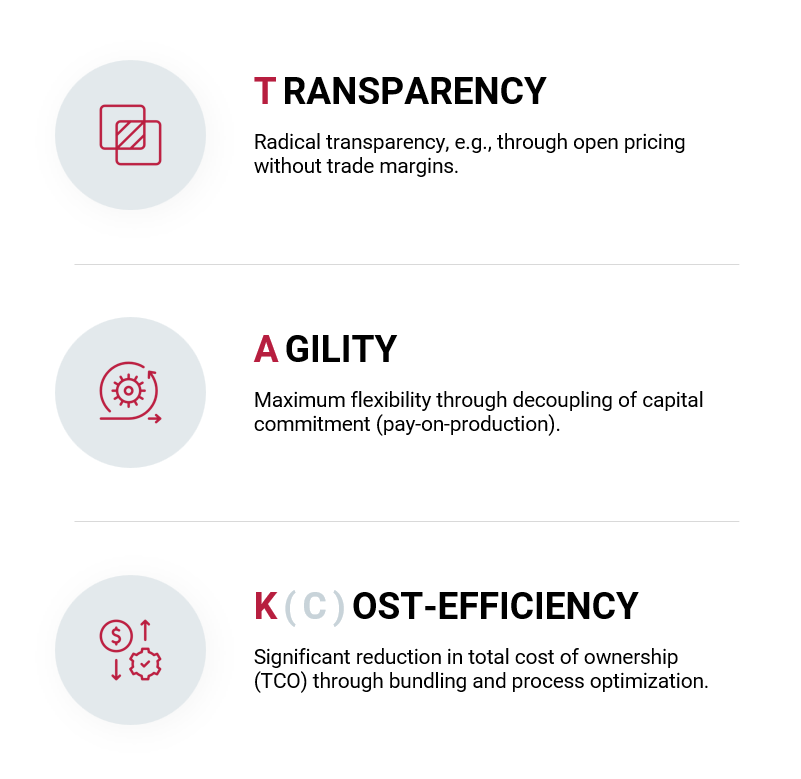The current escalation in global supply chains shows that even the most modern industries remain vulnerable. Dutch manufacturer Nexperia, one of the largest suppliers of standard components, is at the center of the new chip crisis. It is not special chips that are in short supply, but everyday components such as diodes, transistors, and controllers. Between 300 and 500 of these are installed in each vehicle. Volkswagen is now considering production stoppages – a clear sign of how quickly operational risks can become strategically relevant. The German government is forecasting minimal growth of just 0.2 percent for 2025. Economists warn that if the Nexperia supply bottlenecks persist, Germany could face its third consecutive year of recession – with GDP losses of up to 0.5 percentage points.
Standard chips – the underestimated Achilles heel of industry
The first VW Golf (1974) had around 30 semiconductors installed, while the current ID.7 (also VW) has over 18,000. With each new generation of vehicles, the proportion of electronics grows – and with it, dependence on global supply chains. Over 80 percent of all semiconductors pass through at least one stage of production in Asia. This means that Europe remains exposed not only to production risks but also to planning risks.
In the process, the industry's real workhorses often get overlooked: While high-performance AI chips from Nvidia or AMD receive media attention, it is diodes, voltage regulators, and microcontrollers that keep vehicles, machines, and infrastructure running. It is precisely these inconspicuous standard components that Nexperia produces – and it is precisely their failure that is currently bringing entire production lines to a standstill. In terms of quantity, they account for the majority of semiconductor demand, but often remain invisible until they are missing.
The consequences of this dependency are measurable: Rising delivery times in the semiconductor market since 2020 have established the new normal in 2025 at 25 percent above pre-COVID levels. Capacity bottlenecks between 2021 and 2025 led to delivery times of up to 22 weeks and losses of over €99 billion in the German automotive industry. In 2025, the average delivery time will be 26 weeks – more than twice as long as before the pandemic.
The figures make it clear: optimization without control leads to dead ends. Flexibility alone is not enough – control counts.
Dependency as Europe's strategic Achilles' heel
The escalation surrounding Nexperia shows that raw materials and standard components are no longer just economic goods, but geopolitical levers.
China has recognized that export controls on gallium, germanium, and chips have a similar effect to sanctions – only more targeted. This allows Beijing to make real-time decisions about Europe's production capacity. This new dependency is a shift in power – comparable to the energy crisis of 2022, when Europe recognized its vulnerability due to the loss of Russian gas supplies.
Insiders report that the former Nexperia CEO had concrete plans to cut 40 percent of the workforce in Europe, close the Munich R&D center, and relocate production facilities from Hamburg to China. Trade secrets have already been transferred from the British plant to Asia. The Dutch nationalization at the end of September was intended to prevent precisely that.
Two approaches for Europe's stability
In the long term, Europe needs production sovereignty; in the short term, it needs operational transparency in its supply chains.
EU semiconductor production – sovereignty in the long term
With the European Chips Act, the plants in Dresden, Magdeburg, and Reutlingen, and investments from Bosch, Infineon, and TSMC, Europe is moving forward. These new fabs are intended to reduce supply dependencies and keep technological know-how in Europe. But the time horizon remains long: it will take five to seven years before this infrastructure is actually producing. During this time, companies must secure who will supply their critical components – and how risks can be managed operationally.
Two complementary strategies come into play: Second sourcing reduces dependencies by adding additional suppliers, while reshoring reduces geopolitical risks by moving production back to Europe. Both approaches require years of adjustments and approval processes and do not offer 1:1 alternatives – they are investments in resilience, not in short-term supply security.
Real-time transparency – sovereignty in the here and now
OEMs and suppliers can already take action today by digitally mapping and synchronizing their supply chains. Component logistics as a service makes it possible to make material flows, inventories, and delivery times transparent. Regular pick-up routes based on the milk run principle, dynamic safety stocks, and uniform labeling link physical and digital control. This creates agile networks in which resilience arises from data sovereignty and process clarity – not from warehousing.
Legal requirements – transparency is mandatory
Transparency is no longer just an economic option, but a regulatory necessity. The Corporate Sustainability Due Diligence Directive (CSDDD), the Cyber Resilience Act (CRA), and the upcoming PFAS regulation require complete documentation of the origin, safety, and environmental impact of products. Those who cannot provide complete documentation risk fines, market access, and reputation damage.
Raw material export controls – the new bottleneck
In 2024, China made the export of gallium, germanium, and rare earths subject to approval, while the US restricts high-performance chips and Japan restricts specialty chemicals. As a result, security of supply is no longer determined solely by economic factors, but also by political ones. In the future, companies will have to prove where their raw materials come from and which supply chains are involved. Many still lack the operational data depth to identify or manage dependencies in a timely manner.
TAK – Component logistics as a service
The TAK model (transparency, agility, cost efficiency) from btv technologies offers an integrated solution to these challenges. Transparency means complete documentation of every component – from raw materials to production. Agility means real-time control of warehouse and transport chains, including milk runs and central labeling. Cost efficiency is achieved through clear service costs instead of trade margins. Compliance readiness ensures automated reports and audit security in ESG audits.
The operational advantages in detail:
- Intelligent safety stocks: No hidden margins, no allocation problems, and no production downtime.
- Customized labeling: Simplified goods receipt and 100 percent traceability.
- Milkrun concept: Consolidated delivery in customer-specific reusable containers, ship-to-line if desired.
- Choose from over 70 services that take your supply chain to the next level.
- Pay only for the services you use, with complete transparency.
While traditional in-house logistics (DIY) relies on warehousing and reactive inventory management, as a Service enables a paradigm shift: Instead of purchasing and storing components, companies gain transparency, process reliability, and real-time data—without losing margins and with full operational control. This is how TAK combines operational risk management with strategic control—and makes supply chains manageable.
Learn more: TAK Component Logistics – Zero Margin. Full Control.
What the crisis reveals
The Nexperia crisis is more than just a corporate event. It shows that supply chains themselves have become a geopolitical instrument. Europe's sovereignty depends not only on how many new fabs are built, but also on whether business and politics understand the supply chain as a security-relevant system – and make it transparent.
Conclusion – control is a must
The chip crisis of 2025 shows that Europe needs production sovereignty and transparency – not one after the other, but simultaneously. Only the combination of politics, technology, and corporate responsibility makes resilience measurable. TAK from btv technologies provides the operational foundation for this: traceability, auditability, and cost transparency. Those who create transparency today not only plan better – they survive more stably.
FAQ – Chip crisis 2025 and component logistics as a service (TAK)
The EU Supply Chain Due Diligence Directive (CSDDD) requires companies to provide complete documentation of the origin, working conditions, and environmental impact of their suppliers. The Cyber Resilience Act (CRA) requires proof of security and software components in networked products. The PFAS Regulation requires transparency regarding the use of persistent chemicals. Those who do not meet these requirements risk fines, market access, and reputation damage. TAK provides the technical basis for these documentation requirements—through digital documentation, audit security, and automated reporting.
In 2024, China made the export of gallium, germanium, and rare earths subject to approval – raw materials that are indispensable for semiconductors, batteries, and photovoltaics. The US restricts the sale of high-performance chips and manufacturing equipment to China. Japan regulates specialty chemicals for chip production. As a result, supply is no longer controlled solely by economic factors, but also by political ones. Those who map their supply chains transparently can identify early on which materials pass through critical regions – and activate alternative sources or storage strategies in good time. Operational data sovereignty is becoming a strategic necessity.
TAK replaces trade with service. btv does not sell components, but reliability: complete transparency, compliance security, and operational controllability – without trade margins and with fixed service costs. Currently, data availability is provided via reports and direct coordination, but with the planned customer dashboard, companies will in future have direct insight into inventories, delivery times, and movements – in real time. TAK thus creates the basis for data-driven decisions instead of reactive crisis management.


